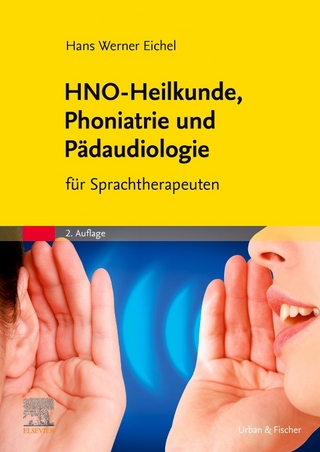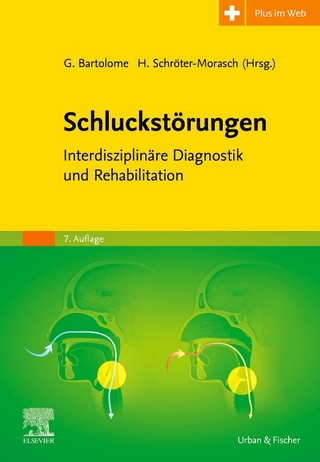
Assessment of Communication Disorders in Children
Plural Publishing Inc (Verlag)
978-1-63550-266-4 (ISBN)
Assessment of Communication Disorders in Children: Resources and Protocols, Fourth Edition offers a unique combination of scholarly information, invaluable resources, and time-saving protocols on assessment of the full range of communication disorders in children, including nonverbal or minimally verbal children.
Most resource books offer limited research and scholarly information, thus making them unsuitable as textbooks for academic courses on assessment and diagnosis. Similarly, most traditional textbooks do not include practical, easy-to-use, and time-saving resources and protocols that the practicing clinicians can readily use during assessment sessions. By combining the strengths of traditional texts with newer assessment resources and protocols, this one-of-a-kind book offers a single, comprehensive source that is suitable as a textbook and useful as a practical clinical resource.
This bestselling and trusted text:
Includes an extensive discussion of issues in using standardized tests along with detailed information on psychometric principles and offers a detailed discussion of alternative assessment approaches that minimize the problems inherent to standardized tests
Describes a new, comprehensive, and integrated assessment approach that derives its strengths from the traditional as well as several alternative approaches
Addresses the multicultural issues in assessing communication disorders in children and integrates culturally responsive assessment procedures into the assessment protocols
Contains two chapters for each disorder: one on resources that offers scholarly and research background and one on resources that describe practical procedures and protocols that save the clinician's preparation time
Includes access to a PluralPlus companion website which allows clinicians to view, modify, and print the assessment protocols for their personal use
New to the Fourth Edition:
A new section on the assessment of voice in transgender and gender diverse adolescents
A new section on selective mutism in bilingual children, included in alternative and integrated assessment of ethnoculturally diverse children
All normative tables placed in relevant chapter appendices for quick access
The content has been updated throughout to reflect the current state of research
Updated diagnostic features of all childhood communication disorders
All protocols streamlined and edited for precision (in book and on website)
Updated resources for commonly used assessment instruments and standardized tests, now available on the companion website
All defined and key terms are now bolded
Simplified writing style and reduced redundancy for increased readability and comprehension
M. N. Hegde, PhD, is Professor Emeritus of Speech-Language Pathology at California State University, Freso. A specialist in fluency disorders, child language disorders, research methods, and treatment procedures in communication disorders, Dr. Hegde enjoys world renown as a researcher, presenter, contributor of original articles to leading national and international journals, and critically acclaimed author of more than two dozen highly regarded books in speech-language pathology. He has edited more than 25 books for different publishers. He is on the editorial board of several scientific journals and has been a guest editor of international journals. He is also a consulting editor of publishing houses.+++++++++++++++++++++++++++++++++++++++++++++++A speech-language pathologist for over 20 years, Frances Pomaville, PhD, is an Assistant Professor in the Communicative Disorders and Deaf Studies Department at California State University, Fresno. She teaches undergraduate and graduate level courses in the areas of diagnostic procedures, anatomy and physiology, fluency, voice, traumatic brain injury, and dysphagia. She also supervises graduate students in their clinical practicum. Prior to accepting a faculty position at California State University, Fresno, Dr. Pomaville was the Director of Clinical Services at San Joaquin Valley Rehabilitation Hospital. Prior to that she had extensive experience as a speech-language pathologist in private practice, acute care settings, and inpatient and outpatient rehabilitation settings. Dr. Pomaville has also worked with children in the public school setting as an itinerant speech-language pathologist, and she spent several years working with students in a special education program for deaf and hard of hearing children.
Preface
Creating Child-Specific Assessment Packages with Protocols on the Companion Website
Part I. Foundations of Assessment
Chapter 1. Assessment of Communication Disorders in Children
Assessment, Evaluation, and Diagnosis
Written Case History
The Initial Clinical Interview
Hearing Screening
Orofacial Examination
Diadochokinetic Tasks
Speech-Language Sample
Standardized Assessment Instruments
Alternative and Integrated Assessment Procedures
Assessment of Children With Complex Communication Needs
Assessment of Literacy Skills
Stimulability
Postassessment Counseling
Assessment Report
Chapter Summary
Study Questions
References
Chapter 2. Common Assessment Protocols
Notes to the Clinician
Common Protocol 1: Child Case History
Common Protocol 2: Developmental Milestones from 0 to 4 Years of Age
Instructions for Conducting the Orofacial Examination: Observations and Implications
Common Protocol 3: Orofacial Examination and Hearing Screening
Common Protocol 4: Diadochokinetic Assessment
Common Protocol 5: Speech-Language Sample Transcription
Common Protocol 6: Language Sample Analysis Protocol: Syntactic, Morphological, and Pragmatic Skills
Common Protocol 7: Assessment Report Outline
References
Chapter 3. Standardized Assessment
Standardized and Norm-Referenced Tests
Test Construction
Reliability
Validity
Questionnaires and Developmental Inventories
Strengths of Standardized Tests
General Limitations of Standardized Tests
Specific Limitations of Standardized Tests in Assessing Ethnoculturally Diverse Children
Prudent Use of Standardized Tests
Chapter Summary
Study Questions
References
Chapter 4. Alternative and Integrated Assessment
Assessment in Ethnoculturally Diverse Societies
Can Speech-Language Assessment Be Culture-Free?
Assessment of African American Children
General Strategies for Assessing Bilingual Children
Assessment of Asian American Children
Assessment of Hispanic American Children
Assessment of Native American Children
Alternative Assessment Approaches
Behavioral Assessment
Criterion-Referenced and Client-Specific Assessment
Authentic Assessment
Dynamic Assessment
A Comprehensive and Integrated Assessment Approach
Chapter Summary
Study Questions
References
Part II. Assessment of Speech Sound Production
Chapter 5. Assessment of Speech Sound Production: Resources
Overview of Speech Sound Production
Classification of Speech Sounds
Normative Data on Speech Sound Learning
Phonological Analysis of Speech Sounds
Speech Sound Disorders
Language Disorders and Speech Sound Disorders
Dysarthria Associated with Cerebral Palsy
Childhood Apraxia of Speech
Hearing Loss and Speech Sound Disorders
Overview of Assessment of Speech Sound Production
Screening for Speech Sound Disorders
Standardized Norm-Referenced Tests of Speech Sound Production
Criterion-Referenced Assessment
Speech and Language Samples
Stimulability of Speech Sounds
Analysis and Integration of Assessment Results
Diagnostic Criteria and Differential Diagnosis
Postassessment Counseling
Chapter Summary
Study Questions
References
Chapter 6. Assessment of Speech Sound Production: Protocols
Notes to the Clinician
Speech Sound Assessment Protocol 1: Interview
Speech Sound Assessment Protocol 2: Phonetic Inventory Analysis
Speech Sound Assessment Protocol 3: Manner-Place-Voicing Analysis
Speech Sound Assessment Protocol 4: Consonant Clusters Inventory
Speech Sound Assessment Protocol 5: Phonological Patterns
Speech Sound Assessment Protocol 6: Childhood Apraxia of Speech
Speech Sound Assessment Protocol 7: Dysarthric Speech
Selected Multicultural Assessment Protocols
Speech Sound Assessment Protocol 8: African American English Speech Sounds
Speech Sound Assessment Protocol 9: Asian American English Speech Sounds
Speech Sound Assessment Protocol 10: Spanish-Influenced English Speech Sounds
Part III. Assessment of Language Skills in Children
Chapter 7. Assessment of Language Skills in Children: Resources
Prevalence of Language Disorders in Children
Overview of Language Disorders in Children
Description of Language Disorders in Children
Specific Language Impairment
Variables Associated with Language Disorders
Overview of Assessment of Language Disorders
Screening for Language Disorders
Language Sampling
Integrating Alternative Assessment Techniques
Assessment of Language Understanding
Standardized Language Diagnostic Tests
Analysis and Integration of Assessment Results
Differential Diagnosis of Child Language Disorders
Postassessment Counseling
Chapter Summary
Study Questions
References
Chapter 8. Assessment of Language Skills: Protocols
Notes to the Clinician
Language Assessment Protocol 1: Interview
Language Assessment Protocol 2: Normal Language
Language Assessment Protocol 3: Task-Specific Assessment of Basic Vocabulary
Language Assessment Protocol 4: Task-Specific Assessment of Grammatical Morphemes
Language Assessment Protocol 5: Task-Specific Assessment of Conversational Skills
Language Assessment Protocol 6: Task-Specific Assessment of Narrative and Discourse Skills
Language Assessment Protocol 7: Behavioral Assessment
Selected Multicultural Assessment Protocols
Language Assessment Protocol 8: African American English (AAE) Language
Language Assessment Protocol 9: Asian American English Language
Language Assessment Protocol 10: Spanish-Influenced English Language
Part IV. Assessment of Fluency
Chapter 9. Assessment of Fluency Disorders: Resources
Speech Fluency
Disorders of Fluency
Stuttering
Definition and Measurement of Stuttering
Additional Features of Stuttering
Cluttering
Analysis and Integration of Assessment Results
Differential Diagnosis of Fluency Disorders
Postassessment Counseling
Chapter Summary
Study Questions
References
Chapter 10. Assessment of Fluency Disorders: Protocols
Notes to the Clinician
Fluency Assessment Protocol 1: Interview
Fluency Assessment Protocol 2: Dysfluency Measurement
Fluency Assessment Protocol 3: Associated Motor Behaviors
Fluency Assessment Protocol 4: Avoidance Behaviors
Fluency Assessment Protocol 5: Cluttering
Part V. Assessment of Voice
Chapter 11. Assessment of Voice: Resources
Prevalence of Voice Disorders in Children
Children's Voice Disorders
Etiologic Factors Associated With Voice Disorders
The Need for Medical Evaluation
Assessment of Voice Production
Instrumental Evaluation
Laryngeal Imaging
Clinical Assessment of Voice
Stimulability of Voice Production
Assessment of Voice in Ethnoculturally Diverse Children
Assessment of Voice in Transgender and Gender Diverse Adolescents
Analysis and Integration of Assessment Results
Differential Diagnosis of Voice Disorders
Postassessment Counseling
Chapter Summary
Study Questions
References
Chapter 12. Assessment of Voice: Protocols
Notes to the Clinician
Voice Assessment Protocol 1: Interview
Voice Assessment Protocol 2: Vocal Abuse and Misuse Inventory
Voice Assessment Protocol 3: Child Voice Evaluation
Voice Assessment Protocol 4: Resonance and Velopharyngeal Function
Voice Assessment Protocol 5: Voice Stimulability
Part VI. Assessment of Children with Complex Communication Needs
Chapter 13. Assessment of Children with Complex Communication Needs: Resources
An Overview of Children with Complex Communication Needs
The Assessment Team
Assessment of Children with Complex Communication Needs
Case History and Interview
Orofacial Examination and Hearing Screening
Parent-Completed Questionnaires
Standardized and Criterion-Referenced Instruments
Systematic Quantitative and Qualitative Observations
Assessment of Receptive Language
Assessment of Extant Verbalizations
Assessment for Augmentative and Alternative Communication
Analysis and Integration of Assessment Results
Prognosis for Developing Verbal Communication
Postassessment Counseling
Chapter Summary
Study Questions
References
Chapter 14. Assessment of Children with Complex Communication Needs: Protocols
Notes to the Clinician
Children with Complex Communication Needs Assessment Protocol 1: Interview
Children with Complex Communication Needs Assessment Protocol 2: Verbalizations, Signs, and Gestures
Children with Complex Communication Needs Assessment Protocol 3: Qualitative and Quantitative Assessment of Nonverbal Expressive Communication
Children with Complex Communication Needs Assessment Protocol 4: Qualitative and Quantitative Assessment of Nonverbal Receptive Communication
Children with Complex Communication Needs Assessment Protocol 5: Interaction Between Communication Partners and the Child
Chapter 15. Assessment for Augmentative and Alternative Communication Systems
AAC Systems
AAC System Assessment
The Role of Speech-Language Pathologists
Resources for the Clinician
AAC Changing Perspectives
Revised Participation Model
Analysis and Integration of Assessment Results
Postassessment Counseling
Chapter Summary
Study Questions
References
Part VII. Literacy
Chapter 16. A Primer on Literacy Assessment
Language Disorders and Literacy Problems
Emergent Literacy and Home Environment
Emergent Literacy Skill Acquisition
Assessment of Emergent Literacy Skills
Assessment of Reading and Writing
Integrating Language and Literacy Skill Assessment
Chapter Summary
Study Questions
References
Index
| Erscheinungsdatum | 06.04.2021 |
|---|---|
| Zusatzinfo | 0 figures and 11 tables |
| Verlagsort | San Diego |
| Sprache | englisch |
| Maße | 216 x 279 mm |
| Themenwelt | Medizin / Pharmazie ► Gesundheitsfachberufe ► Logopädie |
| ISBN-10 | 1-63550-266-7 / 1635502667 |
| ISBN-13 | 978-1-63550-266-4 / 9781635502664 |
| Zustand | Neuware |
| Haben Sie eine Frage zum Produkt? |
aus dem Bereich


